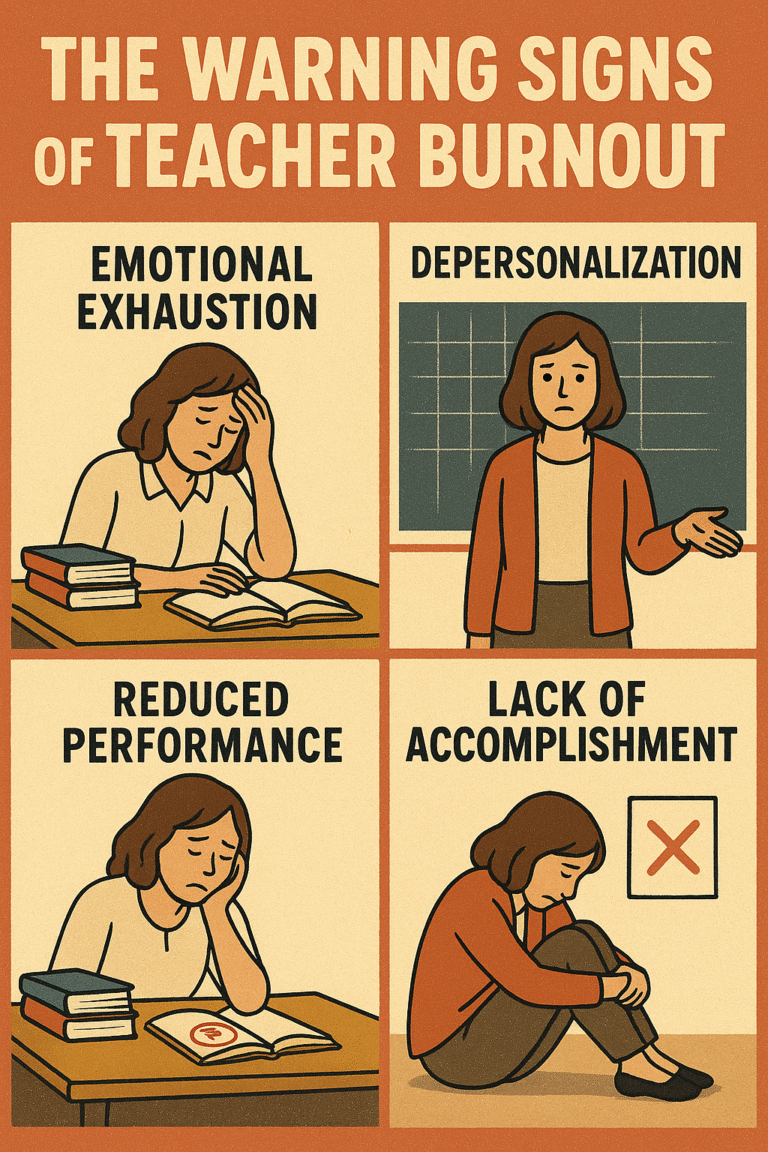
Chronic Burnout Among Teachers: Causes, Consequences, and Systemic Solutions
In today’s fast-paced educational environment, teachers face growing demands that often lead to stress and exhaustion. One major issue affecting educators worldwide is chronic burnout among teachers. Recognizing and addressing this problem is vital for teacher well-being, student outcomes, and the overall effectiveness of educational institutions. Sakhaasunshine Education has been actively researching methods to reduce teacher burnout and implement lasting solutions in schools.
Understanding Chronic Burnout Among Teachers
Chronic burnout among teachers goes beyond occasional fatigue; it represents a prolonged state of emotional, physical, and mental exhaustion caused by ongoing workplace stress. Teachers experiencing burnout often feel overwhelmed, emotionally drained, and unable to meet the demands of their jobs. Recent studies show that approximately 40 to 50 percent of teachers report significant stress symptoms, highlighting the urgent need for intervention.
Burnout is not just an individual issue; it has systemic effects. When teachers face chronic stress, student learning suffers, classroom engagement declines, and overall school performance decreases. Therefore, understanding the causes, consequences, and solutions for burnout is crucial for educators, school leaders, and policymakers.
Causes of Teacher Burnout
- Multiple factors contribute to chronic burnout among teachers. First, the workload is a significant source of stress. Teachers must juggle lesson planning, grading, administrative tasks, and extracurricular responsibilities all at once. This constant pressure leads to exhaustion and anxiety.
- Second, classroom management challenges contribute heavily to burnout. Managing large class sizes, disruptive students, and diverse learning needs can leave teachers feeling helpless. Furthermore, teachers often face unrealistic expectations from parents and school administration, which adds to their stress.
- Third, lack of resources is a key factor. Many teachers work in schools with limited teaching materials, technology, or support staff. This shortage forces educators to exert more effort to meet educational goals, which heightens stress. Additionally, adapting to frequent curriculum changes or implementing new educational technology without proper training can lead to feelings of inadequacy and frustration.
- Lastly, personal life pressures, such as family responsibilities and financial concerns, often worsen professional stress. When teachers struggle to balance work and personal life, burnout becomes inevitable.
Consequences of Chronic Burnout Among Teachers
- The consequences of chronic burnout among teachers are extensive. Emotionally, burned-out teachers may feel detached, irritable, and less motivated. These emotional effects can lead to lower classroom effectiveness, negatively impacting student learning.
- Physically, chronic burnout often shows up as fatigue, headaches, sleep problems, and other stress-related illnesses. Over time, these health issues can lead to absenteeism or even long-term disability, hurting school productivity.
- Mentally, teachers experiencing burnout may struggle with anxiety, depression, or low self-esteem. These psychological effects not only harm their teaching but also affect their personal well-being. High teacher turnover is another direct result of unaddressed burnout. Schools with frequent staff changes often find it hard to maintain continuity, which disrupts students’ learning experiences and overall school culture.
- Moreover, the effects of burnout reach beyond the classroom. When teachers are stressed, collaboration with colleagues decreases, mentorship programs weaken, and school communities become less supportive. Therefore, addressing teacher burnout is not just about individual well-being but also about the health of the organization.
Systemic Solutions to Address Teacher Burnout
To reduce chronic burnout among teachers, systemic solutions need to be applied at various levels. Sakhaasunshine Education emphasizes that a broad approach with individual, organizational, and policy strategies is essential.
1. Organizational Support
Schools should prioritize teacher well-being by cutting unnecessary administrative tasks, providing adequate classroom resources, and allowing time for lesson planning. Additionally, mentorship programs can help new teachers adjust to the profession’s challenges, lowering early-career stress.
2. Professional Development
Ongoing professional development is crucial for managing classroom challenges. Training programs focused on classroom management, technology use, and stress management can empower teachers and boost their confidence. Thus, professional development helps build skills and reduces the risk of burnout.
3. Mental Health and Wellness Programs
Implementing mental health and wellness programs in schools can significantly lower teacher stress. Practices like mindfulness workshops, yoga sessions, and counseling services give teachers tools to manage stress. Furthermore, creating a culture that encourages open conversations about mental health helps eliminate stigma and supports early intervention.
4. Policy Interventions
Government and education authorities play an important role in preventing burnout. Policies that set realistic class sizes, provide enough funding for resources, and recognize teachers’ efforts are necessary. Additionally, including teacher feedback in policy-making ensures that interventions tackle real challenges educators face.
5. Work-Life Balance Strategies
Teachers should be encouraged to maintain a healthy work-life balance. Flexible scheduling, reasonable workload expectations, and support for personal responsibilities can help educators recharge. As a result, schools that promote balance tend to have lower burnout rates and higher job satisfaction among staff.
The Role of Sakhaasunshine Education
Sakhaasunshine Education has been a leader in researching and implementing methods to tackle teacher burnout. Through workshops, training programs, and resource development, Sakhaasunshine Education gives educators practical tools to manage stress effectively. Additionally, their community-focused initiatives ensure that teacher well-being fits into the larger school environment, promoting lasting solutions that benefit both teachers and students.
By focusing on systemic solutions, Sakhaasunshine Education supports a comprehensive approach, understanding that reducing teacher burnout requires action on personal, organizational, and policy levels.
Conclusion
Chronic burnout among teachers is a significant concern with serious implications for educators, students, and educational institutions. Understanding the causes, consequences, and systemic solutions is crucial for creating a healthier and more effective teaching environment. Schools must prioritize teacher well-being through organizational support, professional development, mental health programs, and policies that encourage balance and sustainability.
Ultimately, addressing teacher burnout is not just about lowering stress; it’s about improving the quality of education. With the backing of initiatives like Sakhaasunshine Education, schools can create thorough strategies that ensure teachers thrive, students succeed, and the education system becomes more resilient.
In a nutshell, Teachers are experiencing higher levels of stress as their workloads keep increasing. This pressure comes from various sources, including administrative tasks, larger class sizes, adapting to new technologies, and meeting the diverse needs of students.
Key Causes of Stress: –
Administrative Burden: More paperwork, data entry, and reporting requirements.
– Curriculum Changes: Frequent updates and the need to change lesson plans. –
Classroom Management: Managing larger or more diverse classes. –
Parental Expectations: Increased communication and involvement from parents.
– Standardized Testing: Pressure to achieve high student performance.
– Work-Life Balance: Difficulty disconnecting from work after hours.
Possible Solutions: –
Time Management Training: Workshops to help teachers prioritize and organize tasks.
– Administrative Support: Hiring assistants or reducing non-teaching duties.
– Mental Health Resources: Access to counseling and stress management programs.
– Peer Support Groups: Regular meetings for teachers to share experiences and advice.
– Flexible Scheduling: Allowing for planning periods or remote work options.
– Recognition Programs: Acknowledging and rewarding teacher efforts.
